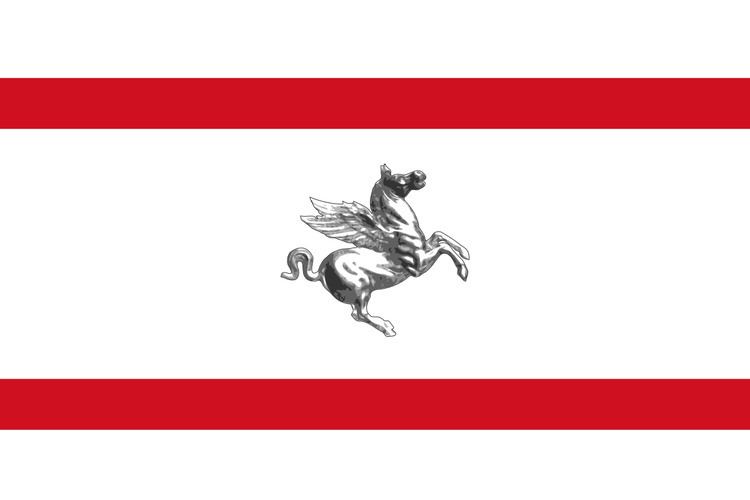 | ||
The Politics of Tuscany, Italy takes place in the framework of a semi-presidential representative democracy, whereby the President of the Region is the head of government, and of a pluriform multi-party system. Legislative power is vested in the Regional Council of Tuscany, while executive power is exercised by the Regional Government led by the President, who is directly elected by the people. The current Statute, which regulates the functioning of the regional institutions, has been in force since 2005.
Contents
- Legislative branch
- Executive branch
- List of Presidents
- Provinces
- Municipalities
- Latest regional election
- References
Prior to the rise of Fascism, most of the deputies elected in Tuscany were part of the liberal establishment (see Historical Right, Historical Left and Liberals), which governed Italy for decades. Florence and the southern provinces of the region were anyway an early stronghold of the Italian Socialist Party (PSI). At the 1924 general election, which opened the way to the Fascist authoritarian rule, Tuscany was one the regions where the National Fascist Party (PNF) obtained more than 70% of the vote.
After World War II, Tuscany became a stronghold of the Italian Communist Party (PCI), which was especially strong in rural areas. The PCI and its successors have governed the region since 1970. The region is now a stronghold of the "centre-left coalition" led by the Democratic Party (PD). The coalition has governed the region since 1995, under President Enrico Rossi since 2010.
Legislative branch
The Regional Council of Tuscany is composed of 41 members.
Councillors are elected in provincial constituencies by proportional representation using the D'Hondt method. The Florence constituency is further divided into 4 sub-constituencies. Preferential voting is allowed: a maximum of two preferences can be expressed for candidates of the same party list and provided the two chosen candidates are of different gender. In this system parties are grouped in alliances, supporting a candidate for the post of President of Tuscany. The candidate receiving at least 40% of the votes is elected to the post and his/her list (or the coalition) is awarded a majority in the Regional Council. If no candidate gets more than 40% of the votes, a run-off is held fourteen days after, with only the two top candidates from the first round allowed. The winning candidate is assured a majority in the Regional Council.
The Council is elected for a five-year term, but, if the President suffers a vote of no confidence, resigns or dies, under the simul stabunt, simul cadent clause introduced in 1999 (literally they will stand together or they will fall together), also the Council is dissolved and a snap election is called.
Executive branch
The Regional Government (Giunta Regionale) is presided by the President of the Region (Presidente della Regione), who is elected for a five-year term, and is currently composed by ten members: the President and 9 regional ministers or assessors (Assessori), including a Vice President (Vice Presidente).
List of Presidents
The current President of Tuscany is Enrico Rossi, who is serving his first term after winning the 2010 regional election.
Provinces
Tuscany is divided in ten provinces, which are a traditional form of local administration in the region.
Socialist and communist ideas had an early diffusion in quite all the provinces around World War I. After the Fascist parenthesis, left-wing parties found their strongholds in eastern rural provinces, especially Siena and Arezzo, while Christian Democracy used to be strong in the north-western part of the Region.
The city of Florence is now one of major national strongholds of Democratic Party. The Province of Siena is also called the "red province of Italy", because the Italian Communist Party has always governed it with the 60% of the votes since 1945 to its dissolution in 1991.
Municipalities
Tuscany is also divided in 287 comuni (municipalities), which have even more history, having been established in the Middle Ages when they were the main places of government. 18 comuni have more than 45,000 inhabitants, a large majority of which are ruled by the centre-left.
Latest regional election
In the latest regional election, which took place on 31 May 2015, Enrico Rossi of the Democratic Party was re-elected for a second term. Claudio Borghi of Lega Nord came distant second. The Democrats were by far the largest party with 46.3% of the vote.
Source: Tuscany Region
